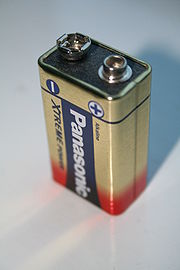I have been on vacation for a week, then traveling for a week, home for a week and now off again for another conference. I WILL get some new material up here soon.
Just a little tidbit before I go: one of the weeks I spent away in September was at Harvard getting trained on TMS and tDCS. All I can say is that I was blown away with how much clinical potential these techniques have. There are an incredible number of people out there could be helped with these techniques and other techniques that will develop as a result of the research that is going on now. This is not a magic pill that cures all, but they could make a large impact on the quality-of-life of a large portion of the population.
More to come after I get back from my trip out of town for the next week.
Sunday, September 23, 2007
Wednesday, September 5, 2007
A 9v battery for Depression????

The same group out of Brazil and Harvard published that I have mentioned in the blog previously, published an article in June on using tDCS for major depression.
A total of 40 patients were recruited and randomized to once of three groups: anodal stimulation of the occipital cortex, anodal tDCS of the left dorsolateral prefrontal cotex (DLPFC) and sham. All patients had been diagnosed with major depression and were medication-free for two months at the time of the study.
Outcomes were the Beck Depression Inventory and the Hamilton Depression Rating Scale, two of the most commonly used outcome measures used in similar depression studies.
All of the participants underwent tDCS with 2mA of stimulation for twenty minutes for 10 days (weekdays over two weeks.) One interesting tid bit that the authors mentioned was that the effects of tDCS are cumulative.
Participants were assessed at baseline and then immediately after the sessions were over, at 15 days and at 30 days using the Ham. D and the BDI. Clinical response was defined as at least a 50% decrease in the Ham D score from baseline and remission was assigned a score of seven or less.
There were no serious adverse effects noted during or after the sessions. Only a few headaches, itching at the site of stimulation and redness at the site of pad attachment.
There were 8 responders in the DLPFC group (out of 21) and 5 remissions. The occipital group had 2 respond (out of 9) with no remissions and the sham group had no responders and no remissions.
The effects of the tDCS lasted at least 30 days after the last session.
Once again, the effects of the tDCS are being attributed to neuromodulation of the activity of the DLPFC "...induc(ing) a change in the DLPFC activity, a critical area in the cortico-subcortical, mood-related neural network."
Just think, for twenty minutes a day there were 13 of the 21 participants that had at least a fifty percent improvement. All with a nine volt battery.
Maybe I should regress back to being a young kid and start licking batteries more often???????
Subscribe to:
Comments (Atom)